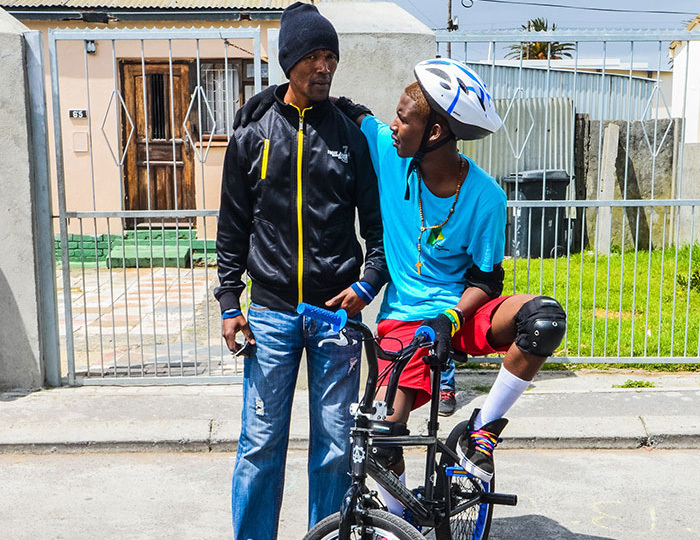Saddle up
10 January 2014
In a country where children are becoming increasingly overweight as a result of sedentary lifestyles, cycling is one way to get them to burn up calories while moving from A to B. But are our city's roads built for cyclists?
The number of fatalities among cyclists on South African roads is twice that of the Netherlands, where bicycles are a highly utilised means of transport.
The comparison gives an indication of how unsafe cycling is in South Africa, says Associate Professor Marianne Vanderschuren, a road and transport expert in the Department of Civil Engineering.
Vanderschuren, who came to this country from the Netherlands 15 years ago, says she thinks twice before getting on a bicycle.
"South Africa has adopted the US road system with its 'over-dimensioned' broad lanes, even in the suburbs; roads that people generally don't walk or cycle on."
But things are changing, albeit slowly. She slaps a weighty document on her desk. .
"This is almost done; it's the first time we've created non-motorised facility guidelines on how to design roads equitably."
By this, she means bicycle- and pedestrian-friendly.
This tome is to be presented to the national Department of Transport. It's dense with technical drawings and information; a tool designed to guide road engineers and give them a new way of looking at the usage of South Africa's road network.
Vanderschuren believes it will pave the way for practices that will be set in law.
Change is already evident, even among the old-school padmakers who have been in the job for years.
"They know today's roads need to be shared for sustainability and equity."
In the city, too, cycling infrastructure has grown. But it's not yet enough, she adds.
Motorists aren't yet accustomed to accommodating cyclists on the road, and Pedal Power's recommendation of a 1.5m gap between car and bike, though laudable, is not legal.
"he legal distance is 1m, and only in the Western Cape," says Vanderschuren, "but our research shows that most vehicles pass cyclists with a gap of 80cm or less on average."
What's on her wish list? First, children should be able to cycle on pavements provided they adhere to a commuter speed of less than 20km/h. Second, driver education is paramount.
"Given South Africa's road safety issues, it's almost impossible to teach children to cycle safely. And it's a vicious cycle: most affluent children, cocooned by cars, never learn to judge speed and distance."
Hopefully, the guidelines destined for government will help to change that.
Story by Helen Swingler. Photo by Lisa Burnell.
Read more:
Tipping the scales: SA's kids too fat, too sedentaryFeast your eyes
Baby fat
 This work is licensed under a Creative Commons Attribution-NoDerivatives 4.0 International License.
This work is licensed under a Creative Commons Attribution-NoDerivatives 4.0 International License.
Please view the republishing articles page for more information.










